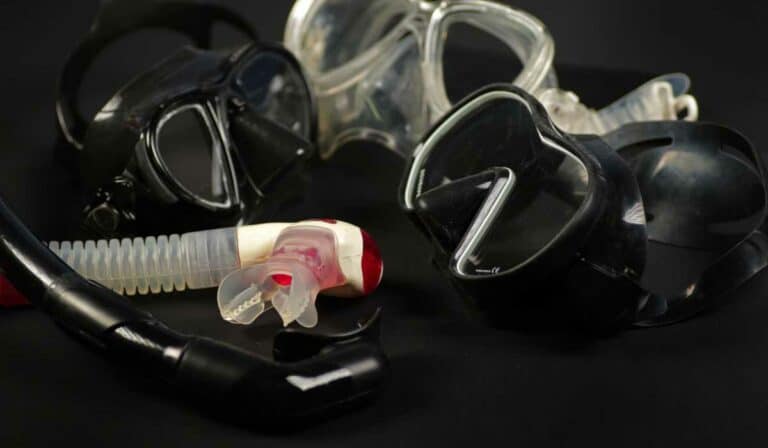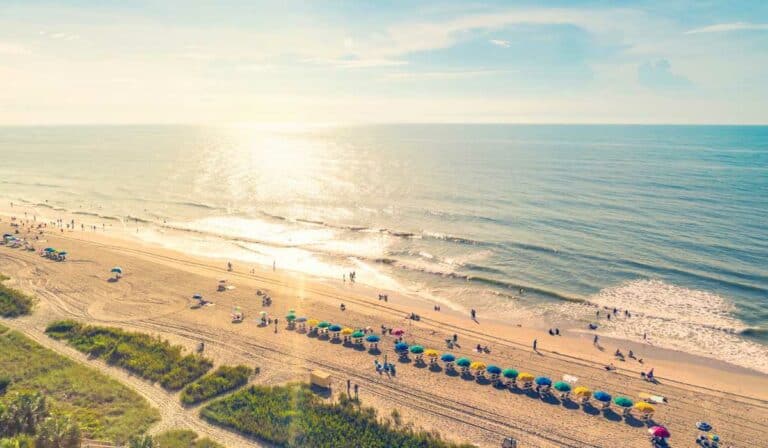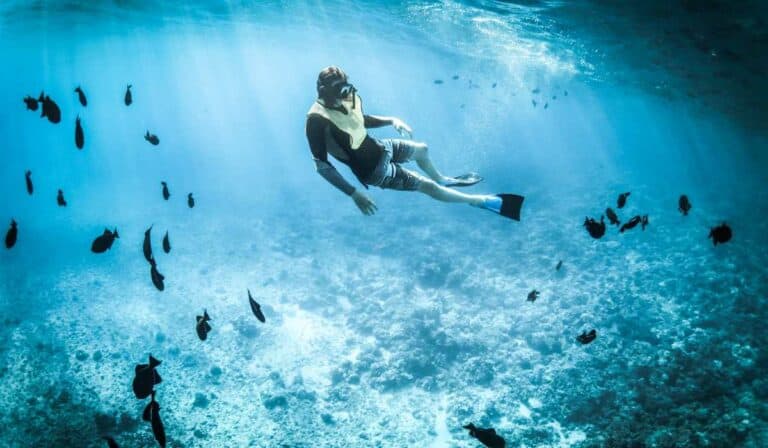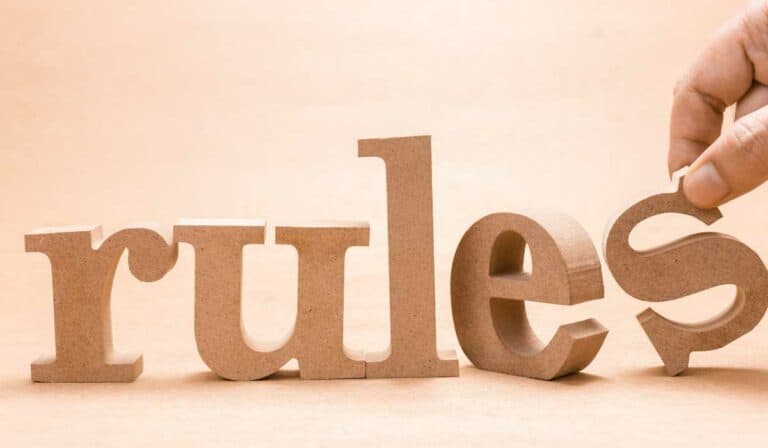Scuba Diving Questions You Must Know
Scuba Diving Questions You Must Know are essential for anyone wanting to explore this world of scuba diving safely and enjoyably. As a thrilling adventure sport, scuba diving allows you to experience unique marine life, breathtaking coral reefs, and hidden treasures beneath the waves. However, it’s crucial to understand various aspects of this activity before taking the plunge.
In this post, we will delve into Scuba Diving Questions You Must Know by discussing vital topics such as equipment requirements, depth limitations, dive duration considerations, safety precautions, and risks involved in scuba diving. Furthermore, we’ll provide guidance on selecting reputable dive shops and centers for your underwater escapades.
Armed with proper knowledge and training from experienced instructors can ensure an unforgettable journey through our planet’s mesmerizing aquatic realms while preserving both personal well-being and environmental integrity.
Table of Contents
1. What is Scuba Diving?
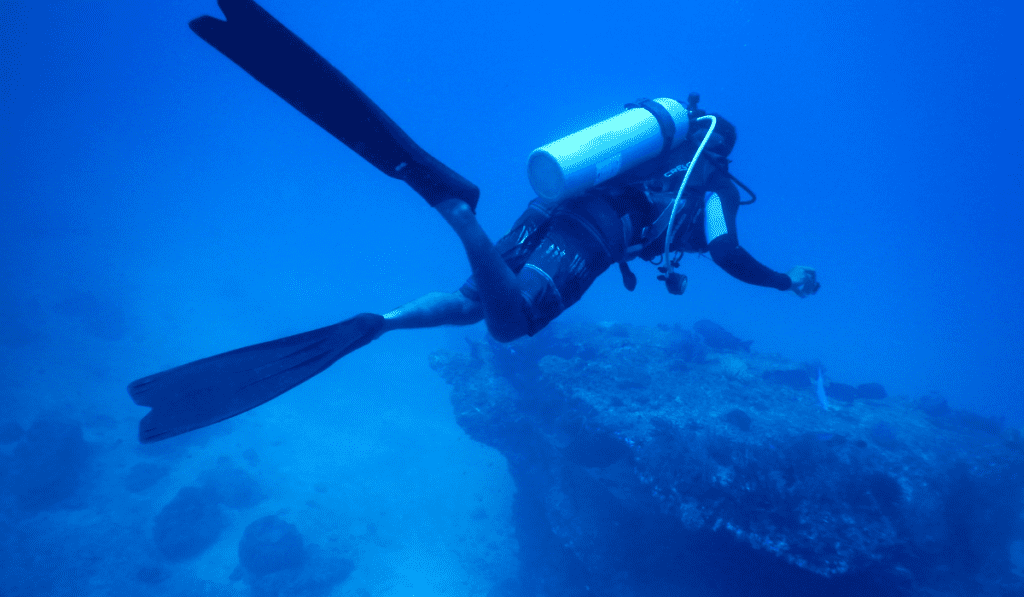
Scuba diving is a thrilling and adventurous underwater activity that allows you to explore the hidden depths of our planet’s oceans, seas, lakes, and other bodies of water. The term “scuba” stands for self-contained underwater breathing apparatus, which refers to the equipment used by divers to breathe while submerged.
Divers wear specialized gear such as masks, fins, wetsuits, or drysuits (depending on water temperature), buoyancy control devices (BCDs), regulators, and tanks filled with compressed air or other gas mixtures like Nitrox. This equipment enables them to remain underwater for extended periods without needing to surface frequently for air.
Scuba classes exist for all levels, ranging from introductory open-water certifications to advanced technical dive training – providing an opportunity for any interested in experiencing the underwater world to do so securely and with assurance. As you progress through your scuba diving journey, you’ll have opportunities not only to visit incredible marine environments but also to develop valuable skills such as navigation techniques and emergency response procedures.
- The basics: Learn about essential scuba gear components like masks (how they work) and how different types of fins affect your movement in the water (choosing the right one).
- Certification levels: Understand what it takes to earn various certification levels from organizations like PADI (course descriptions) and SSI (overview of their programs).
- Advanced techniques: Discover the world of technical diving, which allows experienced divers to explore deeper depths using specialized equipment and training (TDI courses overview).
In addition to being a fun and exciting pastime, scuba diving also offers unique opportunities for scientific research, underwater photography, marine conservation efforts, and even historical exploration through wreck dives. For those seeking a stimulating experience or an intimate connection with the aquatic environment, scuba diving offers extraordinary opportunities.
Click here to read about Jamaica Scuba Diving Guide: Dive into the Best Underwater World
As a scuba diver, it’s important to know how to scuba dive safely. Before diving, make sure you have the proper training and equipment. Always dive with a buddy and check your dive gear before entering the water. Be aware of your surroundings and the marine life you encounter. If you have any medical conditions, make sure to consult with a doctor before diving. And always remember to ascend slowly to avoid decompression sickness.
Some popular scuba diving destinations include the Great Barrier Reef in Australia, the Red Sea in Egypt, and the Maldives. Dive centers and dive shops can be found all over the world, and many offer dive trips and dive boats to take you to the best dive sites.
Exploring the underwater world is an incredible experience, and scuba diving allows you to do it up close and personal. So grab your dive computer, check your dive buddy’s gear, and dive into the adventure of a lifetime.
Scuba diving is an exhilarating and daring pursuit that provides a unique chance to investigate the aquatic realm. With the proper apparatus, one can have a secure and gratifying experience. Now let’s take a peek at the equipment necessary for scuba diving.
The Key Takeaway:
Scuba diving is an exciting underwater activity that requires specialized gear and training. From beginner open-water certifications to advanced technical dive training, scuba diving offers opportunities for exploration, skill development, and scientific research. It’s important to prioritize safety by having proper training and equipment, always diving with a buddy, checking gear before entering the water, being aware of surroundings and marine life encountered, and consulting with a doctor if necessary due to medical conditions before diving.
2. What Equipment Do I Need for Scuba Diving?
Scuba diving is an incredible adventure that allows you to explore the underwater world, but it requires specific equipment to ensure a safe and enjoyable experience. Here’s a list of essential gear you’ll need for scuba diving:
- Mask: A good quality mask is crucial as it provides clear vision underwater and ensures comfort during your dive. Look for one with tempered glass lenses and a silicone skirt that fits snugly on your face. To find the perfect scuba diving mask for your needs, consult this helpful guide.
- Fins: Fins help propel you through the water efficiently, conserving energy while swimming or maneuvering in currents. There are two main types: open-heel fins (which require booties) and full-foot fins (worn without booties). Learn more about choosing the right pair of fins by reading our article on scuba fin buyer’s guide.
- Snorkel: Although not used during actual dives, snorkels are useful when exploring shallow waters or waiting at the surface between dives.
- Buoyancy Control Device (BCD): The BCD helps maintain neutral buoyancy throughout your dive by allowing you to add or release air from its bladder system as needed. It also holds your tank securely in place while providing attachment points for other gear such as weights and accessories.
- Regulator: The regulator is a critical piece of equipment that connects to your tank and delivers breathable air at the right pressure. It consists of a first stage (which attaches to the tank) and a second stage (the mouthpiece you breathe from). Ensure it’s well-maintained and serviced regularly for optimal performance.
- Tank: Scuba tanks hold compressed air, typically either aluminum or steel, with varying capacities depending on your dive plan. Prior to your dive, it is critical that you check the air pressure in your tank to guarantee adequate supply for the duration of your immersion.
- Optional: Depending on water temperature, you may need additional gear such as wetsuits or drysuits for thermal protection during dives. Exposure suits also provide some protection against cuts, scrapes, and stings from marine life.
It’s essential to invest in quality scuba diving equipment that fits well and meets safety standards. Proper maintenance is crucial too – always rinse off saltwater after each use, store items properly when not in use, and schedule regular servicing appointments with a reputable dive shop.
Scuba diving necessitates the utilization of specific apparatus for safeguarding and contentment, including a wetsuit, fins, mask, and snorkel. Now, let’s explore how far you can plunge while scuba diving.
The Key Takeaway:
To scuba dive safely and enjoyably, you need essential gear such as a mask with tempered glass lenses, fins for efficient swimming or maneuvering in currents, a buoyancy control device to maintain neutral buoyancy throughout your dive, a regulator that delivers breathable air at the right pressure from your tank which holds compressed air. Additionally, depending on water temperature exposure suits may be required. It’s important to invest in quality equipment that fits well and meets safety standards while also properly maintaining it after each use.
Click here to read about Scuba Diving in Mexico: Experiencing the Thrill of Diving
3. How Deep Can I Dive?
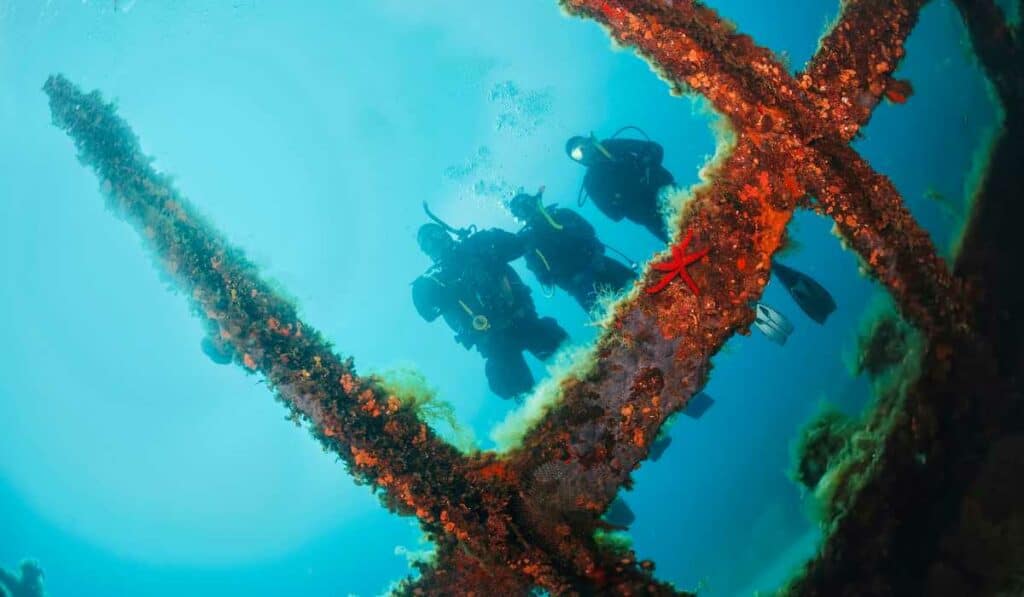
Diving depths vary depending on your experience, certification level, and the type of dive you are doing. The maximum depth for recreational scuba diving is 130 feet (40 meters). But it’s essential to keep in mind that venturing into greater depths necessitates particular training and apparatus for safe practices.
Depth Limits Based on Certification Levels
- Open Water Diver: This entry-level certification allows divers to go down to a maximum depth of 60 feet (18 meters).
- Advanced Open Water Diver: With this certification, divers can explore depths up to 100 feet (30 meters), giving them access to more advanced dive sites.
- Deep Diver Specialty Course: After completing this course, certified divers can safely reach depths of up to 130 feet (40 meters) within recreational limits.
Beyond these limits, technical diving certifications such as Trimix or Closed Circuit Rebreather allow experienced divers with specialized training and equipment to explore even greater depths. Keep in mind that deep diving comes with increased risks and should only be attempted by those who have undergone proper training from a reputable organization like PADI.
The Importance of No Decompression Limits (NDLs)
No Decompression Limits refer to the amount of time you can spend at a specific depth without needing decompression stops during your ascent. Exceeding NDLs increases the risk of decompression sickness (source). It’s crucial to monitor your dive computer or use dive tables to keep track of your NDLs and plan your dives accordingly.
Factors Affecting Dive Depth
Several factors can influence how deep you can safely dive, including:
- Air consumption: The deeper you go, the faster you consume air due to increased pressure. This means that diving at greater depths will shorten the duration of your dive.
- Nitrogen narcosis: At depths below 100 feet (30 meters), divers may experience nitrogen narcosis, which impairs cognitive function and decision-making abilities. It is essential to be aware of this risk when planning a deep dive (source).
- Oxygen toxicity: When diving with enriched air nitrox (EANx), oxygen partial pressure increases as depth increases. Divers must stay within their maximum operating depth (MOD) for the specific gas mixture they are using to avoid oxygen toxicity risks.
In summary, while recreational scuba diving allows for exploration up to 130 feet (40 meters), it’s important always to consider safety precautions such as proper training, equipment, and adherence to no decompression limits when planning any underwater adventure.
Diving to great depths requires knowledge, skill and experience. It is essential that divers recognize the potential dangers of diving deeply in order to remain secure while exploring beneath the sea. It is essential to consider how much time can be spent safely beneath the water’s surface.
The Key Takeaway:
Recreational diving has a depth limit of 40m, yet further depths require specific training and equipment. Certification levels such as Open Water Diver, Advanced Open Water Diver, and Deep Diver Specialty Courses have different depth limits, while No Decompression Limits are crucial to avoid decompression sickness.
4. How Long Can I Stay Underwater?
As a scuba diver, one of the most important questions you need to ask is how long you can stay underwater. The answer depends on several factors, including your air supply and the depth of your dive. In this article, we’ll explore these factors and provide tips on how to extend your dive time.
Air Supply
Your air supply is one of the main factors that determine how long you can stay underwater during a scuba dive. A standard aluminum tank holds around 80 cubic feet (2265 liters) of compressed air, which typically lasts for about an hour at shallow depths for an average diver with normal breathing patterns.
- Tank Size: Larger tanks hold more air and allow for longer dives; however, they also tend to be heavier and bulkier.
- Breathing Rate: Divers who breathe slowly and calmly will consume their air supply more slowly than those who breathe rapidly or have anxiety while diving.
- Dive Depth: The deeper you go in the water, the faster your body consumes oxygen due to increased pressure – so staying shallower allows for longer dives.
Click here to read about Wet Suits vs Dry Suits – Picking The Right Scuba Suit
No Decompression Limits (NDL)
In addition to considering your air supply when determining how long you can stay underwater during a scuba dive, it’s important to understand no decompression limits (NDLs). NDLs refer to the maximum amount of time you can spend at a certain depth without requiring decompression stops during your ascent. Exceeding these limits increases the risk of decompression sickness, also known as “the bends.”
NDLs vary depending on dive depth and are shorter for deeper dives. At 60 feet (18 meters) and 100 feet (30 meters), the NDL might be around 55 minutes and 20 minutes respectively.
Conserving Air and Extending Dive Time
To make the most out of your scuba diving experience and extend your underwater time, consider implementing some air conservation techniques:
- Maintain Buoyancy Control: Proper buoyancy control helps reduce unnecessary movement and effort that consumes more air.
- Breathe Slowly and Deeply: Focus on slow, deep breaths to conserve air supply efficiently.
- Dive Shallow When Possible: Staying shallower reduces both air consumption rates due to pressure changes and NDL restrictions.
By following these tips and understanding the factors that affect your dive time, you can make the most out of your scuba diving experience. Remember to always scuba dive safely and with proper training, equipment, and instructors. Happy diving.
Staying underwater for too long can be dangerous, so it is important to understand how long you should stay under. It is vital to take all necessary measures for a secure scuba dive experience.
The Key Takeaway:
To extend your dive time while scuba diving, you must consider factors such as air supply and no decompression limits. Larger tanks allow for longer dives but are heavier while staying shallower reduces the air consumption rate due to pressure changes and NDL restrictions. By implementing techniques like maintaining buoyancy control and breathing slowly and deeply, you can make the most out of your scuba diving experience safely with proper training, equipment, and instructors.
5. Is Scuba Diving Safe?
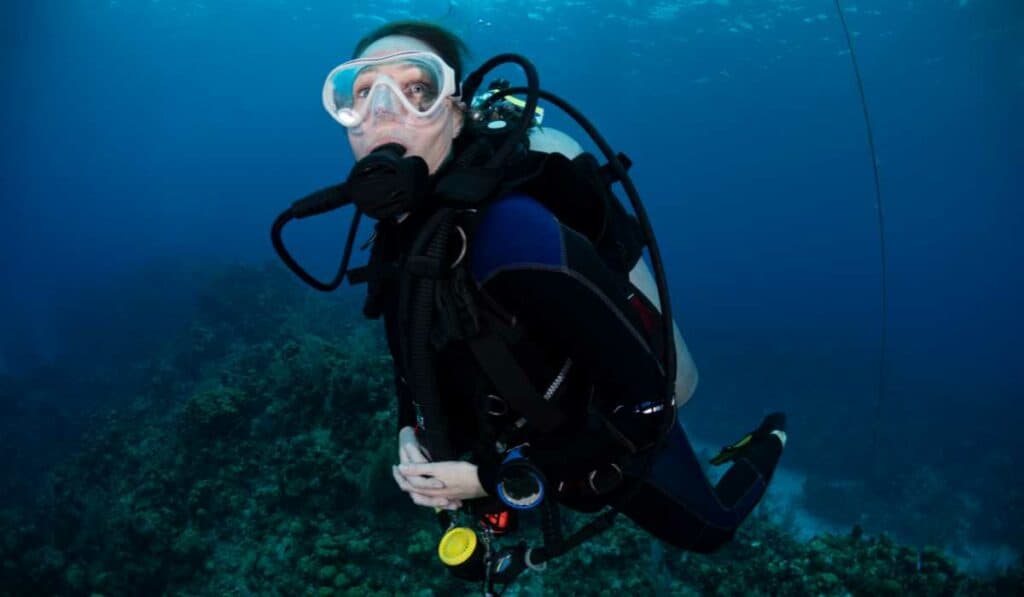
Scuba diving can be a fun, secure activity if the appropriate gear and education are obtained and used correctly. It is important to follow all safety protocols and never dive beyond your skill level or comfort zone. In this section, we will discuss some of the key factors that contribute to scuba diving safety.
Adequate Training
The first step in ensuring scuba diving safety is obtaining proper training from a certified instructor. There are several reputable organizations such as PADI, NAUI, and SSI that offer comprehensive courses for beginners as well as advanced divers looking to expand their skills.
Maintaining Your Equipment
Before each dive, it is essential to inspect your scuba gear for any signs of wear or damage to ensure safety underwater. This includes checking hoses, regulators, tanks, masks, fins, buoyancy control devices (BCDs), wetsuits/drysuits, and weight systems.
- Hoses: Look for cracks or leaks which could lead to air loss during your dive.
- Regulators: Ensure they’re functioning correctly by taking a few breaths while on the surface before descending.
- Tanks: Check for rust or corrosion around valves; make sure they have been recently inspected according to local regulations.
- Masks/Fins/Snorkels: Inspect straps for wear/tear; ensure mask seals properly around your face.
- BCDs: Test the inflator and deflator mechanisms, as well as any integrated weight systems for proper function.
- Wetsuits/Drysuits: Check for tears or holes that could lead to water entry and loss of insulation.
Dive Planning
A key aspect of scuba diving safety is thorough dive planning. This involves researching the dive site and understanding local conditions such as currents, tides, visibility, and potential hazards like marine life or underwater structures. Additionally, always plan your dives with a buddy system in place; having someone else by your side can be invaluable in case of an emergency situation while underwater.
Fitness & Health
Maintaining good physical fitness and health is essential for safe scuba diving. Diving puts stress on the body due to factors such as increased pressure at depth and temperature changes which can affect circulation. It’s important to ensure you’re fit enough to handle these stresses before attempting a dive. Consult with a medical professional if you have any concerns about pre-existing health conditions that may impact your ability to safely participate in scuba diving activities.
Click here to read about Scuba Safety: Rules Everyone Must Follow While Diving
In summary, scuba diving can be a safe activity when approached responsibly with adequate training, equipment maintenance, careful planning, and attention to personal fitness/health considerations. By following these guidelines along with established safety protocols from reputable organizations like PADI or NAUI, scuba divers can enjoy exploring the underwater world without unnecessary risks.
Scuba diving can be a secure, pleasing experience when the necessary safety measures are followed. The next heading will discuss what risks you should consider before taking part in scuba diving activities.
The Key Takeaway:
To ensure safe scuba diving, it is crucial to obtain proper training from a certified instructor and maintain your equipment regularly. Thorough dive planning, including researching the site and understanding local conditions, as well as maintaining good physical fitness and health are also essential for a successful dive.
6. What Are the Risks of Scuba Diving?
Before taking a dive, it’s important to be aware of the potential dangers associated with scuba diving in order to minimize them. It’s important to be aware of the potential dangers and take steps to minimize them before taking a dive. Some common risks associated with scuba diving include:
- Decompression sickness: Also known as “the bends,” decompression sickness occurs when nitrogen bubbles form in your body tissues due to rapid changes in pressure during ascent from a dive. The bends can be fatal if not treated in time and may cause dizziness, joint pain or even paralysis. To avoid this risk, divers should follow proper ascent procedures and use dive computers or tables for guidance.
- Nitrogen narcosis: Nitrogen narcosis is a temporary alteration in consciousness caused by breathing compressed air at depth. Symptoms may include impaired judgment, confusion, and loss of coordination – all dangerous conditions while underwater. The best way to prevent nitrogen narcosis is by limiting your dives’ depths and durations within recommended guidelines.
- Oxygen toxicity: Oxygen becomes toxic under high pressures experienced during deep dives (usually below 135 feet/41 meters). Exposure to high levels of oxygen can cause convulsions and unconsciousness without warning signs – both potentially fatal outcomes underwater. Stick within safe limits established by training agencies like PADI or NAUI for recreational diving.
- Barotrauma: Barotrauma refers to injuries resulting from changes in pressure affecting air-filled spaces within our bodies (such as ears or sinuses). Equalizing early and often throughout descent/ascent helps mitigate barotrauma risk; however, never force equalization if it doesn’t occur naturally – this could lead to more severe injuries.
- Marine life injuries or attacks: While encounters with dangerous marine life are rare, they can happen. Be aware of your surroundings and avoid touching or disturbing any animals you encounter underwater. In case of an emergency, knowing how to react appropriately is crucial – consider taking a course on First Aid for Hazardous Marine Life Injuries.
Understanding these risks is essential for every diver, but it’s also important not to let fear overshadow the enjoyment of exploring the underwater world. By following safety protocols and guidelines provided by certified dive instructors and organizations like PADI, divers can minimize these risks while still experiencing all that scuba diving has to offer.
Before plunging into the depths of scuba diving, it is essential to be aware of the potential risks involved. Realizing the significance of selecting a reliable dive shop and getting all queries answered is essential for an enjoyable and secure scuba diving experience.
The Key Takeaway:
Scuba diving can be thrilling, yet it entails hazards such as decompression illness, nitrogen narcosis, oxygen poisoning and barotrauma. Divers can minimize these risks by following safety protocols and guidelines provided by certified dive instructors and organizations like PADI. Therefore, it is imperative to understand the risks beforehand in order to adequately safeguard oneself while diving.
7. What Should I Look For in a Dive Shop?
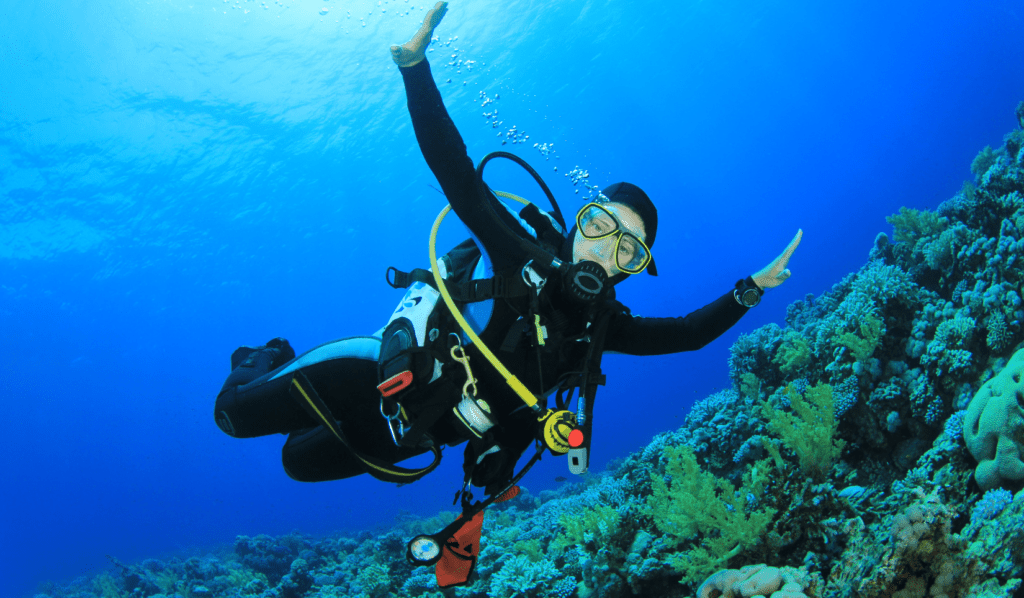
When selecting a dive shop, certified instructors with local knowledge and experience in teaching all levels of divers should be taken into account. Here are some key factors to consider when selecting the perfect dive shop:
- Certified Instructors: Make sure the dive shop has certified instructors who are knowledgeable about local conditions and have experience teaching divers of all levels, from beginner to advanced courses.
- Rental Gear Quality: The quality of rental gear can significantly impact your diving experience. Ensure the shop offers well-maintained equipment that adheres to current safety standards.
- Friendly Staff: A welcoming staff will make you feel comfortable asking questions or seeking advice during your visit. Friendly customer service is essential for an enjoyable scuba diving adventure.
- Dive Trip Options: Look for a dive shop with various trip options catering to different skill levels, interests, and schedules so you can choose what suits you best.
- Affiliations & Reviews: Check if the dive center is affiliated with reputable organizations like PADI or SSI (Scuba Schools International). Also, read online reviews from other divers who have used their services before making any decisions.
In addition to these considerations, don’t hesitate to ask questions about their policies on group sizes during dives or how they handle emergencies while underwater. Remember that finding the right fit may take time but ultimately contributes greatly towards having a safe and enjoyable scuba diving experience.
Click here to read about Scuba Diving While Pregnant: What Every Woman Must Know
8. Scuba Diving Questions You Must Know
If you’re new to scuba diving, you probably have a lot of questions. Even experienced divers can benefit from refreshing their knowledge. Here are some of the most important scuba diving questions and answers to help you dive safely and enjoyably.
Faqs about Scuba Diving Questions You Must Know
WHAT ARE THE 5 MOST IMPORTANT RULES OF SCUBA DIVING?
The five most important rules of scuba diving are:
1. Breathe continuously and never hold your breath.
2. Equalize pressure in ears and sinuses regularly during descent.
3. Ascend slowly, no faster than 30 feet per minute, to avoid decompression sickness.
4. Maintain proper buoyancy control with a balanced weight system and use your BCD (Buoyancy Control Device).
5. Plan your dive and always dive within your limits, including depth, time, air consumption, and experience level.
What is the 1-3 rule in scuba diving?
The 1-3 rule in scuba diving refers to a guideline for planning multi-level dives. It states that for every foot you ascend from your deepest point on a multi-level dive, you should spend three minutes at that shallower depth before ascending further. This helps manage nitrogen absorption while minimizing the risk of decompression sickness (source).
WHAT IS THE MOST IMPORTANT RULE IN SCUBA DIVING?
The most important rule in scuba diving is to always dive within your limits. This includes your depth, time, air consumption, and experience level. Never push yourself beyond what you’re comfortable with, and always plan your dive and dive your plan.
What are the 4 fundamentals of diving?
The four fundamentals of diving include:
1. Buoyancy control: Mastering neutral buoyancy and maintaining proper trim.
2. Propulsion techniques: Efficient finning styles for different situations.
3. Air management: Monitoring and conserving air supply during a dive.
4. Situational awareness: Being aware of surroundings, dive buddy, equipment, and potential hazards (source).
Remember, scuba diving can be a fun and rewarding experience, but it’s important to prioritize safety. Make sure you have proper training, use appropriate scuba equipment and dive gear, and always dive with a buddy. Respect the underwater world and its marine life, and enjoy your dive.
Conclusion
Scuba diving is an exhilarating and satisfying pursuit that permits one to investigate the underwater realm. To ensure a safe and enjoyable experience, familiarizing yourself with the essential questions regarding scuba diving is recommended. Before you embark on your underwater journey, it is important to be aware of the necessary equipment, depth limits, dive duration, and safety precautions associated with scuba diving.



